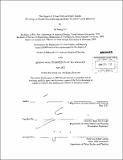The impact of urban form on older adults : focusing on neighborhood design and baby boomers' local behavior
Author(s)
Lee, Jae Seung, Ph. D. Massachusetts Institute of Technology
DownloadFull printable version (17.33Mb)
Other Contributors
Massachusetts Institute of Technology. Dept. of Urban Studies and Planning.
Advisor
Eran Ben-Joseph.
Terms of use
Metadata
Show full item recordAbstract
The growing share of older adults across the globe raises concern about active and safe aging. This dissertation examines aging baby boomers' travel and social behavior resulting from neighborhood design. The body of the research consists of three interrelated essays: The first essay explores age-restricted neighborhoods that target persons 55 and over, providing agetargeted physical design and social services. This study aims to offer insights into how this suburban morphology has evolved, as well as its impacts on travel behavior of baby boomers living in agerestricted neighborhoods. The study compares several physical characteristics, walkability, and local activity levels of five representative age-restricted neighborhoods and five nearby ordinary neighborhoods in Massachusetts. The analysis finds that, while providing diverse neighborhood amenities, age-restricted neighborhoods remain automobile-dependent due to the poor street connectivity and the lack of potential nearby destinations. The second essay analyzes the travel behavior, residential choices, and related preferences of 55+ baby boomers in suburban Boston, looking specifically at age-restricted neighborhoods. For this highly autodependent group, do neighborhood-related characteristics influence local-level recreational walk/bike and social activity trip-making? The analysis aims to discern community (for example, social network) versus physical (for example, street network) influences. The analysis reveals modest neighborhood effects. Living in age-restricted, as opposed to un-restricted, suburban neighborhoods modestly increases the likelihood of being active and the number of local social trips. Overall, the age-restricted community status has greater influence on recreational and social activity trip-making than the neighborhood physical characteristics, although some community - neighborhood interaction exists. The third essay seeks to reveal the interactions between urban form and safety affecting urban baby boomers' walking behavior. Spatial analysis reveals the traffic accident patterns in urban Boston neighborhoods, indicating hotspots around activity centers. The analysis identifies significant effects of walkable urban forms (e.g., mixed use, well-connected streets, and good access to potential destinations) on older adults' walking. Yet accessibility to retail, as well as traffic speed and volume, are positively associated with the traffic accident frequency. The result implies a potential health trade-off between neighborhood walkability and safety, at least for urban baby boomers.
Description
Thesis (Ph. D.)--Massachusetts Institute of Technology, Dept. of Urban Studies and Planning, 2012. Cataloged from PDF version of thesis. Includes bibliographical references (p. 179-192).
Date issued
2012Department
Massachusetts Institute of Technology. Department of Urban Studies and PlanningPublisher
Massachusetts Institute of Technology
Keywords
Urban Studies and Planning.